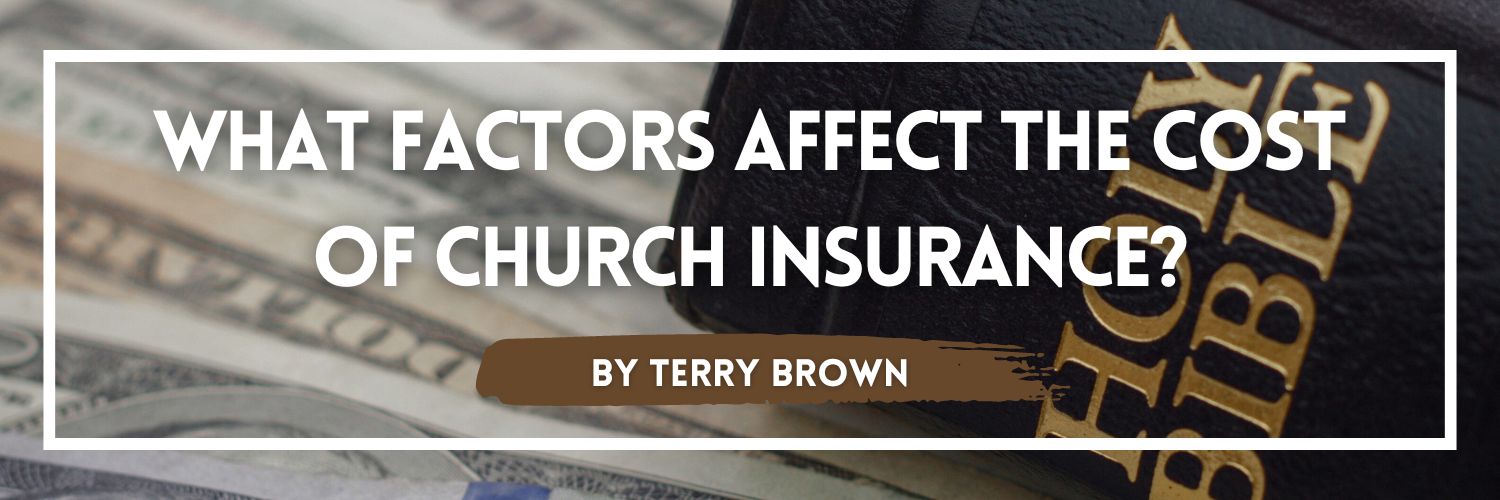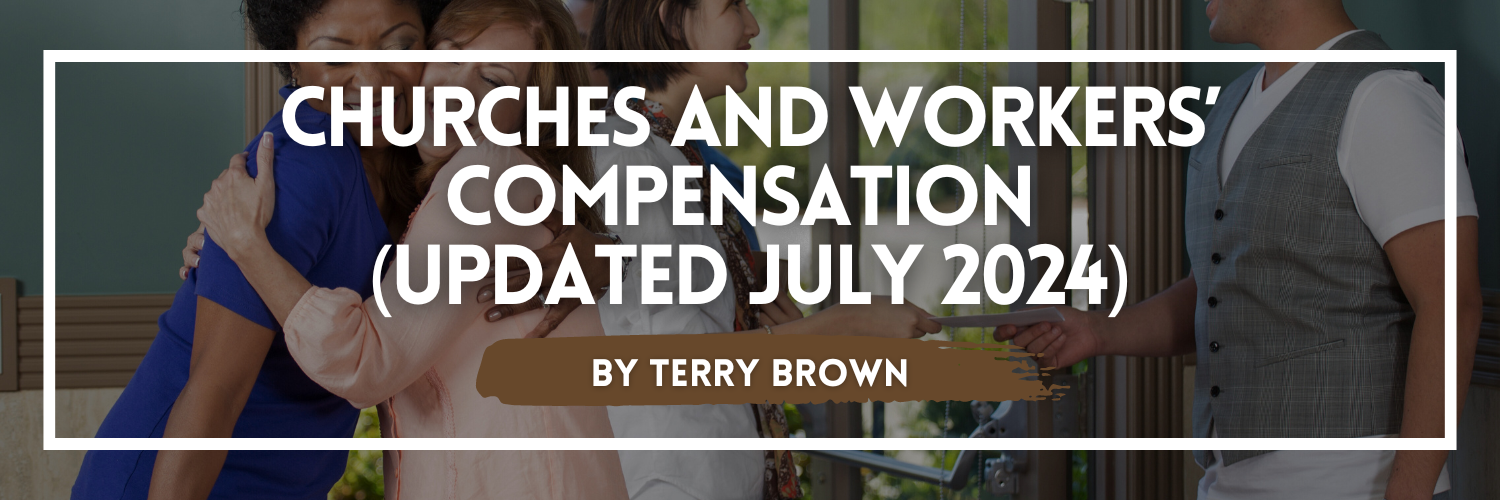Understanding the factors that influence church insurance costs is crucial for ensuring your church is adequately protected without overspending. This guide provides a detailed look at the primary elements that impact church insurance premiums, offering practical tips to help you manage these costs effectively.
Key Points
- Larger buildings and congregations generally lead to higher insurance premiums.
- Areas prone to natural disasters or with high crime rates increase insurance costs.
- Property, liability, and specialized coverages for unique church activities influence premiums.
- Frequent or severe past claims can raise insurance rates, while a clean history can lower them.
- Implementing security systems, safety protocols, and child protection policies can reduce premiums.
Size and Location of the Church
Size of the Church
Building Size: Larger buildings generally require higher coverage limits, which increases premiums. The replacement cost of the building, including construction materials and labor, is a significant factor.
Congregation Size: A larger congregation means more people are using the facilities, which can increase the likelihood of accidents or injuries, leading to higher liability premiums.
Multiple Locations: Churches with multiple buildings or campuses need to cover each site, increasing the overall insurance cost.
Location of the Church
Geographic Risks: The location of the church significantly affects insurance premiums. Churches in areas prone to natural disasters like floods, hurricanes, or earthquakes will face higher property insurance costs due to the increased risk.
Crime Rates: Higher crime rates in the church’s vicinity can lead to increased premiums, particularly for theft and vandalism coverage.Sometimes the carrier will require higher deductibles on theft coverage.
Local Regulations: Some regions have specific insurance requirements or building codes that can impact the cost and type of coverage needed.
Coverage Needs
Property Insurance
Building Coverage: This includes the cost to repair or replace the church building in case of damage. The value of the building and the cost of construction materials directly influence premiums. Building costs have increased substantially since COVID, with $200+ per square foot becoming the norm.
Contents Coverage: Protects the church’s personal property, including furniture, musical instruments, and office equipment. High-value items like stained glass windows and religious artifacts require additional coverage.
Special Items Coverage: Specific items unique to churches, such as outdoor signs, mission trip supplies, and minister’s personal effects, may need specialized coverage.
Liability Insurance
General Liability: Covers claims of bodily injury or property damage that occur on church premises. Churches with high visitor traffic or frequent events will need higher limits.
Professional Liability: Protects against claims of negligence or misconduct by church leaders and staff. This is crucial for churches offering counseling services or running daycare programs.
Sexual Misconduct Liability: Covers claims related to sexual misconduct, an essential coverage given the sensitive nature of such incidents and the high potential for costly lawsuits.
Workers’ Compensation
Employee Coverage: Provides benefits for employees injured while working. The number of employees, their roles, and the associated risks affect the premiums. For example, maintenance staff or those working with children might increase the cost.
Additional Coverages
Cyber Liability: Protects against data breaches and cyber-attacks. With increasing digital activities, this has become crucial for churches maintaining electronic records or online donation systems.
Directors and Officers Liability: Covers legal costs for directors and officers against claims of wrongful acts in managing the church. This is especially important for larger churches with complex governance structures.
Business Interruption: Covers loss of income if the church is unable to operate due to covered property damage. This is vital for churches heavily reliant on regular services and events for income.
Employment Practices Liability: Protects the church against employee claims of wrongful termination, sexual harassment, or discrimination.
Religious Expression Liability: Covers legal costs of suits claiming the church applied religious discrimination.
Specific Church Activities and Assets
Mission Trips
Travel Insurance: Coverage for international and domestic mission trips, including medical emergencies and trip cancellations, can add to the premium but is essential for safeguarding participants. Emergency medical evacuation by aircraft can be included as an option.
Daycare Operations
Liability and Abuse Coverage: Churches running daycare centers need specific liability coverage for child care activities, including protection against claims of abuse or neglect.
Appurtenant Buildings
Additional Structures: Coverage for secondary buildings like fellowship halls, gymnasiums, or parsonages adds to the overall insurance cost. Each building’s use, value, and condition are considered.
Unique Assets
Special Property Items: Items like stained glass windows, historic artifacts, Torah’s and high-value equipment require additional endorsements, increasing the premium.
Claims History and Safeguards
Claims History
Past Claims: A history of frequent or severe claims can lead to higher premiums as insurers view the church as higher risk. Conversely, a clean claims history can help lower costs.
Type of Claims: The nature of past claims (e.g., property damage vs. liability claims) also affects premiums. Liability claims can be particularly costly and impact rates significantly.
Safeguards
Risk Management: Implementing robust risk management practices can reduce premiums. This includes:
- Security Systems: Installing monitored burglar and fire alarms, security cameras, and other safety measures can lower insurance costs.
- Safety Protocols: Regular safety inspections, maintenance programs, and having clear policies for events and activities reduce risk.
- Child Protection Policies: Strict child protection guidelines and staff training can mitigate the risk of abuse claims and reduce liability premiums.
- Sprinkler Systems: Buildings with sprinkler systems often receive discounts on property insurance.
- Access Controls: Limited access to certain areas can decrease the likelihood of theft or vandalism.
Tailoring coverage to match the specific risks and operations of the church not only ensures comprehensive protection but can also lead to cost savings by avoiding unnecessary coverages and focusing on critical areas of risk.
Conclusion
Tailoring your insurance coverage to match the specific risks and operations of your church ensures comprehensive protection and can lead to significant cost savings.
For more information or to get a personalized church insurance quote, contact Terry Brown at (706) 851-7110 or click on the “GET A QUOTE” button anywhere on our website.
[Click here to get a church insurance quote from Terry Brown]
Frequently Asked Questions
What are the main factors that affect church insurance costs?
The main factors include the size and location of the church, coverage needs (property, liability, and specialized coverages), claims history, and implemented risk management practices.
How does the size of the church impact insurance premiums?
Larger buildings require higher coverage limits, and larger congregations increase the likelihood of accidents or injuries, both of which lead to higher premiums. Churches with multiple locations also face higher overall insurance costs.
Why does the location of the church matter for insurance costs?
The geographic location affects premiums due to risks associated with natural disasters, crime rates, and local regulations. Churches in high-risk areas for floods, earthquakes, or high crime rates will generally have higher insurance costs.
What types of coverage do churches typically need?
Churches typically need property insurance (for buildings and contents), liability insurance (general, professional, and sexual misconduct), workers’ compensation, and additional coverages like cyber liability, directors and officers liability, business interruption, and more.
How can a church reduce its insurance premiums?
Churches can reduce premiums by maintaining a clean claims history, implementing robust risk management practices (like installing security systems and following safety protocols), bundling policies, and conducting regular safety inspections.
How does claims history affect church insurance costs?
A history of frequent or severe claims indicates higher risk to insurers, leading to higher premiums. Conversely, a clean claims history can help reduce insurance costs.
What is the importance of risk management in lowering insurance costs?
Risk management practices, such as installing security systems, conducting regular safety inspections, and implementing child protection policies, can reduce the likelihood of claims and, consequently, lower insurance premiums.
Why do churches need specialized coverage for certain activities?
Churches often engage in unique activities such as mission trips, daycare operations, and hosting large events. These activities come with specific risks that require tailored coverage to ensure comprehensive protection.
How can a church ensure it has adequate coverage without overspending?
Churches should work with an experienced insurance specialist to assess their specific risks and tailor coverage to match their needs. Regular reviews and updates of insurance policies also help in maintaining adequate coverage.
What should a church do if it has multiple locations?
Each location must be individually assessed and covered under the church’s insurance policy, which will increase the overall insurance costs. Working with an insurance specialist who understands church culture can help optimize coverage across multiple locations.




